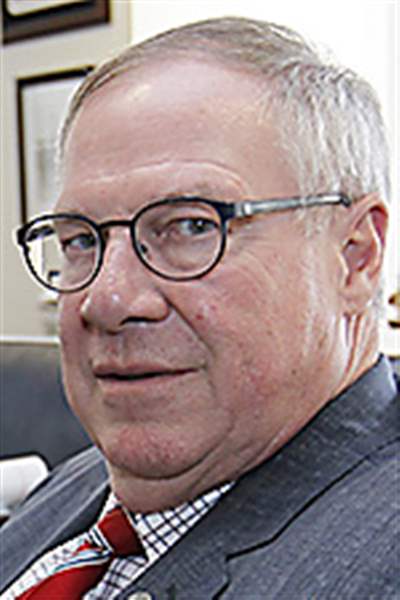
Blight afflicts many communities across U.S.
Toledo, Baltimore mayors among those pursuing solutions to ease city woes
6/29/2014
Collins
THE BLADE/JETTA FRASER
Buy This Image

Collins
Blight hits home, or rather homes, in many cities across the country.
During the U.S. Conference of Mayors’ annual meeting, held in Dallas, a session last Sunday was devoted to the vacant and abandoned properties task force.
Baltimore Mayor Stephanie Rawlings-Blake serves in key leadership positions in the U.S. Conference of Mayors but did not take part in the task force’s session that, according to the agenda, included remarks by city officials from Philadelphia, New Orleans, and Dallas.
Ms. Rawlings-Blake, in a statement to The Blade, stated: “Baltimore’s diverse and beautiful neighborhoods are the foundation on which we can build a stronger city. Every day, I am committed to working to make each community in Baltimore better, safer, and stronger. With my administration’s Vacants to Value initiative, we will continue to incentivize communities to invest in strong neighborhoods, while eliminating blighted properties quickly, efficiently, and economically.
RELATED: Baltimore‘s fight against blight a lesson for Toledo
RELATED: The Ugly Truth About Toledo series
“In order to grow a city, you have to attract new residents and new businesses — while giving those already here more reasons to stay. That’s why this week I announced the Baltimore City Anchor Plan, a new, collaborative effort working with major leaders in the fields of education, research, and medicine to foster economic growth, and spur community development across Baltimore. I’m so grateful to be mayor of a city with so many community partners who are willing to step up and work with government to move our city forward. By working in tandem, we will make our city better, safer, and stronger.”

Rawlings-Blake
Mayor Rawlings-Blake has focused her administration on increasing Baltimore’s population by 10,000 families over the next decade by improving safety and public education and by strengthening city neighborhoods, according to information on the mayor’s Web site.
At the meeting in Dallas, attendees included Toledo Mayor D. Michael Collins, who in an interview with the Blade after the mayors’ meeting, said the city of Toledo is not the only urban center in the United States that has issues related to blight, defined as buildings, both commercial and residential, in disrepair. Toledo is not the only city in the country where illegal dumping of trash, furniture, tires, and other items occurs in neighborhoods.
Defining a problem without coming up with a solution, in his opinion, is neither leadership nor is it a vision. In order for a city to exist, its neighborhoods must be safe and clean, two concepts that are intertwined, the Toledo mayor said, detailing a new plan that involves police officers teaming up with code enforcement/nuisance-abatement officers in specific areas, such as in nine pilot neighborhoods, each with six to eight square blocks. Neighbors will be involved as well to define what plan to pursue. There are nine community service officers, compared to three when the mayor took office.
The teams of officers will report on the conditions of the neighborhood before program implementations are made, the mayor said, noting success of this new program will require a partnership. That is one thing he took away from the Dallas session on the vacant and abandoned properties task force session: The partnership must not be a superficial entity but rather a solid partnership in which neighbors buy into the plan to make improvements.
When the officers go into a neighborhood, it is the city’s position that there will be “zero tolerance” on code violations, Mayor Collins said. One of the keys to the success of the new program will be that the municipal court must hold property owners responsible, the mayor said, adding that it is not the role of government to be responsible for the maintenance and upkeep of private property. The mission is to restore and improve neighborhoods, and that will only be successful if it is a community mission, he said.